Fall fishing for bass is all about finesse. Water temperatures are on the fall, and a fish’s metabolism is slowing down.
Even with finesse fishing it is important to be weedless when fishing shallow water. To do this, I use 1-2 inch finishing nails. Yep – you read it right, finishing nails.
Finishing nails are nice because you can place the weight INSIDE the worm, preventing weeds that would normally cling to outside sinkers used. Nails along with a #4 Gamakatsu weedless hook, a 5-inch Senko worm, an O-ring, and 10 lb. Power Pro line makes the perfect shallow water wacky rig.
What Is a Wacky?
The Wacky Rig Worm (wacky) is my second favorite bass fishing technique second only to frogging. The wacky worm is a very slow presentation; the only wrong way to fish wacky is fast. I typically use wacky when bass aren’t aggressive, in-between weather fronts, or in the fall when water surface temperatures are unstable.
Hooking the wacky is very simple; you take your 5-inch Senko (a worm designed for wacky fishing) and just hook it in the middle. Because it is a finesse fishing style, smaller hooks are used.
Line Matters
For wacky or finesse fishing, I often use 10 lb. Power Pro line. Unlike surface lures like frogs or buzz baits where the target is thick weeds and cover; coupled with the fish’s aggressive strike and running into the same weeds, wacky fishing is more open water based.
The fish often times barely taps the lure, or in some cases causes very little resistance. I find that Power Pro line gives me the best sensitivity to feel those light bites and allows me to see the line move.
It All Comes Together
When I set up my wackys, I always try to have a few set up ahead of time. I take my finishing nail, inject it into the wacky up to the nail head, then with pliers cut the nail head off. I find that it’s easier to control the nail as it goes into the worm with the head still on. Then I slide on my O ring (a castrating band, but you can get small O rings from your local car shop).
When I fish the wacky, I focus on open water locations such as the outside of weed beds or drop offs. When fishing the marshes and shallow lakes, I don’t use a sinker and focus on the worms with nails inside them. (2-10 feet)
Another way to set up wackys and a deep water presentation (10 feet-infinity) is drop shotting; where I tie the hook with a palomar knot, leaving about 1-2 feet of line below the hook and use a heavy sinker for a faster fall.
The nail gives the worm enough weight to fall slowly and gives it a unique action as it tends to fall headfirst. As I bring it back I SLOWLY twitch my rod-tip: pop-pop pause, then reel up any slack. I do this for about 10-15 yards to the boat (on shore I fish right up to the end). Again, the only wrong way to work the wacky is TOO FAST.
With deeper water, I rely on the heavy sinker to keep my line tight – still using the pop-pop-pause technique, but keeping my worm off the bottom.
The biggest thing to keep in mind when using the wacky presentation is that the worm is not a worm. Because you have it hooked in the middle; the worm is being kept horizontal, while twitching. The worm can be seen as a leach or a minnow.
The whole purpose and design of the wacky is vibration. As it goes through the water, it is shaking and twitching. So the pop-pop-pause mimics this erratic movement.
When the bass strikes, it is a casual grab. Remember, you are fishing a slower technique looking for non-aggressive fish. I watch my line on the pause/fall part of my presentation for any irregular movement or tension. Once I sense the fish hit, I drop my rod-tip allowing my line to get tight – then I set the hook.
You will find the biggest challenge to wacky fishing is patience. It’s a rough transition to go from the fast and furious surface bait fishing where each cast lasts 30 seconds to a minute, to the slower presentation where each cast may last 1-3 minutes.
*There are many different colors of worms – I only recommend what works in your water and encourage you to try different colors that suit you and your taste.
**There are many great websites and YouTube videos on how to tie knots – one being animatedknots.com

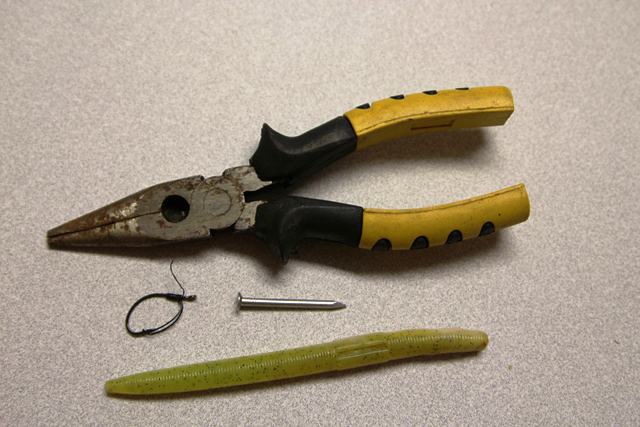
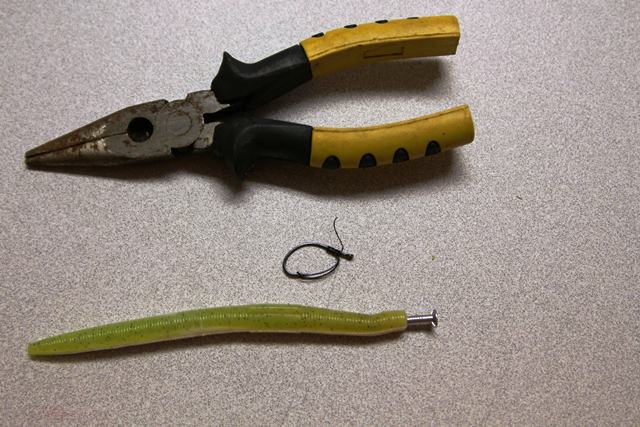
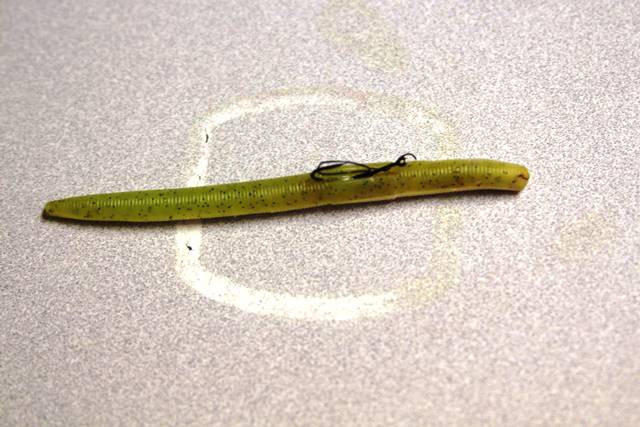
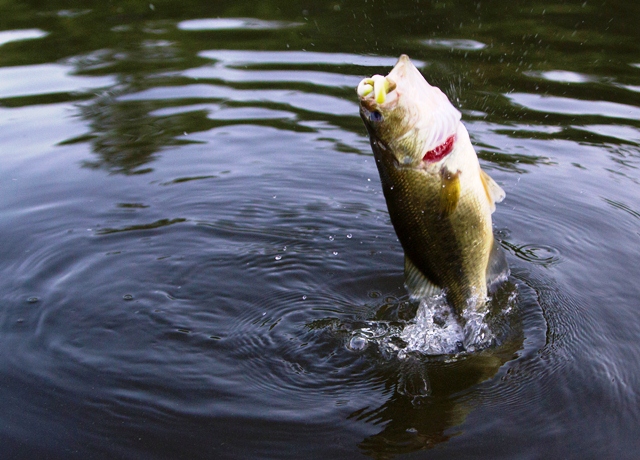
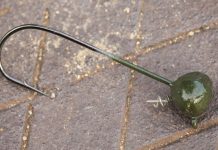
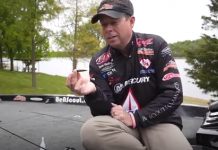
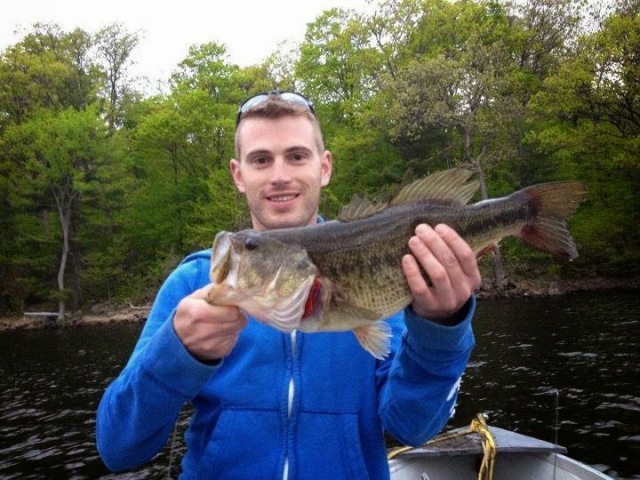
Thanks for the tips. Gonna it them a try! ; )